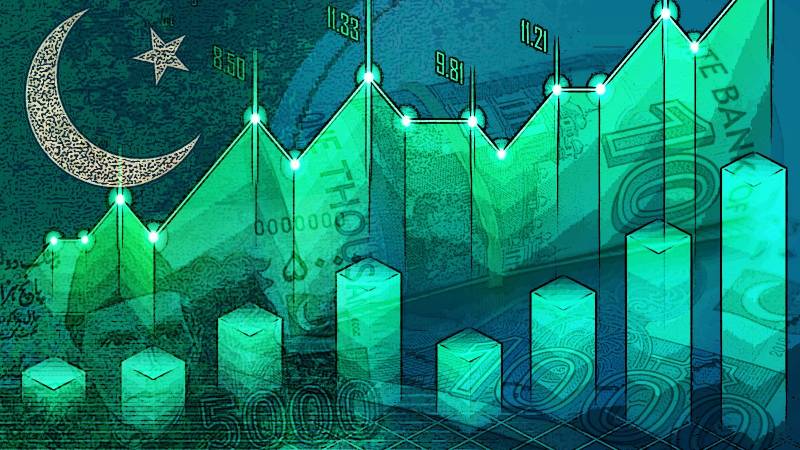
Pakistan is too big to fail, but it should find a way to reduce its public debt, which is close to 80% of GDP and growing rapidly. Given Pakistan’s weak fiscal position and unaffordable levels of debt, it should explore the option of a major domestic debt restructuring (DDR) before another crisis erupts. It can save as much as $3.5 billion, or 1% of GDP, by reducing interest paid on government debt.
Given Pakistan’s polarised politics and terrorist threats , it seems highly unlikely that Pakistan would be able to raise money from the international debt markets soon given its low credit rating. Moody’s Investors Service (Moody’s) noted in its report of February 27th that the "ca" fiscal [rating] reflects Pakistan’s large debt burden and very weak debt affordability. It is therefore highly optimistic to assume that Pakistan would be able to raise money from Panda bonds as the finance minister indicated recently. Last year, the sole developing country to sell Panda bonds was Egypt, but only because the RMB 3.5 billion ($478 million) issue was backed by the guarantees of two AAA-rated multilateral banks.
Pakistan’s total public debt stood at Rs 67.3 trillion ($239 billion) on December 31st, 2023 and accounted for 74.8% of the 2023 GDP. Rs42.6 trillion (or 63.3pc) of this was domestic debt.
The IMF’s current estimate of the government revenues is 12.5% of GDP and that of expenditures at 20.2%. The principal reason for the gap is interest paid on the debt which the IMF reckons to be around 8% of GDP. Interest on domestic debt currently accounts for more than 80% of the total interest paid by the federal government. The net federal revenues for the first half of FY2023-24 were not sufficient to pay even the interest on the borrowings, which climbed by 64% to a record Rs4.2 trillion.
Pakistan’s total public debt stood at Rs 67.3 trillion ($239 billion) on December 31st, 2023 and accounted for 74.8% of the 2023 GDP. Rs42.6 trillion (or 63.3pc) of this was domestic debt.
Pakistan has relied heavily on electricity, gas, and petroleum tariffs and energy taxes to increase its revenues on one hand and by borrowing heavily on the other. Some commercial consumers are paying for natural gas at rates even higher than those in the international markets. This is not sustainable and is hurting the economy. These indirect taxes have been a major contributor to Pakistan’s inflation, currently around 20%.
The staggering rise in borrowings and debt servicing is largely due to the government’s failure to increase tax the GDP ratio, higher interest rates and currency devaluation.
Given Pakistan’s long-term failure to increase its tax base, it is hard to be optimistic about a significant improvement in the short term. Therefore, in the immediate future, the government must reduce its borrowings to create fiscal space.
The domestic debt of Rs42.88 trillion includes Rs 25.69 trillion (60%) in Pakistan Investment Bonds (PIB) and treasury bills of Rs8.29 trillion. The local banks and the central bank together are estimated to hold around Rs20 trillion in the PIBs or 80% of the total.
The banks listed on the stock market made a net profit of Rs544.43 billion during 2023, reflecting a massive 81.95% growth compared to their total earnings in the previous year. Nearly half of the gross interest income of the scheduled banks was attributable to PIBs.
Pakistani banks are in a reasonably good financial position to withstand the cost of restructuring.
A restructuring of floating-rate bonds can help the government reduce its debt servicing costs. This could be in the form of conversion to fixed-rate bonds with longer maturities and lower coupon rates and with the explicit objective of reducing the debt servicing by Rs1 trillion annually.
Pakistani banks are in a reasonably good financial position to withstand the cost of restructuring. Their return on equity was 26% as per the IMF, which noted in its January 2024 review: “the banking sector remains well-capitalized and profitable with improving solvency ratios. The capital adequacy ratio strengthened and NPLs, while increasing slightly, remained well provisioned.”
There is a case for a serious and careful evaluation of a domestic debt restructuring because it is hard to see another way to reduce debt servicing costs to create some fiscal space and the banking industry has benefitted disproportionately from the high yields in government securities and is strong enough to bear this cost if the restructuring is done on the right lines ensuring minimal impact on regulatory capital.
The experience in Sri Lanka shows that domestic debt restructuring is easier to do than external debt restructuring and it can be done without harming investor confidence.
Improvement in the government’s fiscal position may help the country improve its credit rating and thereby its ability to raise financing.

